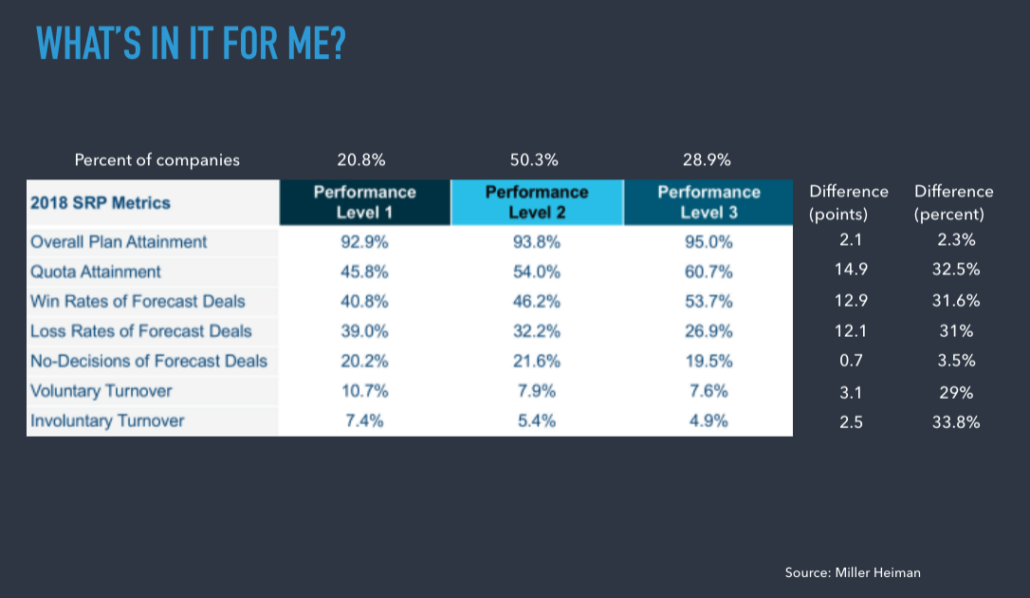The Four Pillars of Building a Strong Account Plan
in Strategic Account Management, Account Planning, Key Account Management /Do you know what goes into a strong account plan? If you already have account plans for each of your key accounts and spent more than five idle minutes creating them, congratulations – you’re already one step ahead of most account managers in your industry.
Account plans are crucial components of the KAM process and serve a variety of purposes all with the end goal of growing, nourishing, and maintaining your key relationships. The thing is, many people don’t give them any second thought and the ones that do know the true value of an account plan are using the wrong tools to create them.
At Kapta, we take our account planning very seriously, so much so that we dedicated an entire webinar to account planning recently. However, if you are more of a visual learner or are short on time, this article will go over everything covered.
So, to start it off, what are the four pillars to creating a strong account plan?
We count them as the following:
- Co-Creation Conversation
- Designing a Win-Win Relationship
- Cornerstones of Building an Effective Plan
- Managing and Utilizing AP’s
Individually, these four pillars function both as features of an account plan and also as steps in the process of building a full-fledged, detailed account plan that you can use for each of your clients.
Why All This Matters
So, why does all of this matter? Why did Kapta spend so much time to create an account planning feature in our platform? It all comes down to what most organizations can’t afford to lose: their key accounts.
Your key accounts (also called strategic accounts) are the top 20% of your customers that do more for your company than any other clients. These are the people that have purchased extensively from your organization and make up 70% of your revenue. Can you afford to give up 70% of your revenue? If you’re in the profit business, absolutely not.
Typically, most organizations have five to ten accounts that they can’t afford to lose. It might seem like a small number, but in actuality, bad interactions or mistakes with just five clients could send the organization into a tailspin. For this reason, it’s crucial that you not only focus on your relationships with these customers but also that you have a plan of action in place through strong account plans so you can protect these relationships at all costs.
What a Great Customer Relationships Look Like
Whether you call it Global Account Management, Strategic Account Management or Key Account Management, all of these positions serve the same purpose: to build relationships and keep the top 20% of clients happy. KAMs are not your ordinary sales reps.
They go above and beyond and are the Trusted Advisors their clients can depend on. Rather than going for the quick sale, they care more about the value they can bring to the relationship that will ultimately lead to revenue growth for not on their organization but for their clients too.
If you’re wondering where you stand and how strong your KAM program is, here are a few qualities to consider in a great account manager:
1) Creates Long Term Relationships
Building relationships takes work, but it’s worth it in the end. Organizations more concerned with making quick sales without attention to the relationship fail to grow in the long run. Consider how frustrating it is to put in so much time to working with a client only for them to leave when their contract is up; a great KAM can change that.
2) Builds and Increases Trust
Are you a vendor or a Trusted Advisor? Vendors rely on offering the best price or convenience, but selling based on product alone won’t help your accounts grow in the long run. The relationship is everything, and when you can become your client’s Trusted Advisor, they’ll wonder how they ever operated without you. With a “seat at the table” with your clients, you’ll have a leg up on competitors and can uncover new growth opportunities.
3) Meets Growth and Retention Goals
Great KAMs are continually striving towards improvement which means they are consistently hitting their individual goals that ultimately benefit the company. Typically, this means hitting growth and retention goals with existing accounts. When those individual goals are met, KAMs will make an impact on organization-wide goals such as reducing churn rates and landing larger deals.
4) Develops Consistent and Repeatable Process
In many organizations, we find that there is a lack of consistency in the KAM process. Everyone is essentially doing their own thing. While one person uses PowerPoint for their accounts, another might use a spreadsheet. When everyone is doing something different, it’s hard for leadership to manage and determine where the team could improve. In addition, a fragmented process also stunts individual KAM growth since you won’t know what’s working for the team and what isn’t. Consistency is a key attribute of a great KAM.
What’s In It for Me?
So, the big question that many new KAMs might ask is “What’s in it for me?” It’s an understandable question because when you put in so much effort to nourish and grow a relationship with strategic accounts, it can be easy to lose sight of the end goal.
When you focus on your relationships starting with a strong account plan, many different areas within your position and organization are enhanced. With a more formal and dynamic account planning process, you can expect benefits across the board.
Here’s some research from Miller Heiman detailing the various performance levels companies are at and how KAM affects the organization:

When you look at the left-hand column, you can see some important areas that affect the individual and the organization as a whole. According to this research study from Miller Heiman, they found that as organizations developed more formal account planning processes, a lot of areas began to change. Click here for our take on this research.
For one, as companies move up the performance levels, quote attainment goes up along with win rates of forecast deals. An important decline is in loss rates of forecast deals.
Perhaps the two most important trends from this chart are voluntary turnover and involuntary turnover. When a company has a formal account planning process in place, and KAMs can grow and enhance their skills, then they have the ability to stick it out at their job for longer and really get to know their companies over the years. On the flip side, when a KAM knows how to do their job well from a formal process, they won’t have any trouble finding a new position if they want to leave.
This goes to show that account planning is more than just a document and it is really a pillar to success for everyone from the individual KAM to the organization and the customer also.
Score Your Processes
Think about the relationships that you have in your life – how strong are your bonds with mismanaged people? You know the ones. The people that are always late, can’t be counted on to show up when you need them, and can disappear off the face of the earth for a time. Whether you want to admit it or not, if your processes aren’t on point, your key accounts might be suffering because of it.
It’s hard to develop a strong relationship with someone if they are never there and aren’t dependable. Even with the best intentions, if your management processes aren’t aligned with your clients’ goals, then you’re missing a huge opportunity to scale and grow the accounts. We recommend that you audit your processes and give yourself an honest score based on how you interact with clients.
Are you doing things in a random fashion, putting out one fire after the next? How often are you talking with your key clients? Is it only every quarter during the QBR or is it monthly? These, along with other factors, can greatly affect your KAM performance and as you start to develop a formal process for account management, the results will soon follow.
Where Many Organizations Stand
A lot of companies live in level two and aren’t making great headway. Many of those are likely you but also your competitors. If you can step it up, you have an advantage.
With your own processes into perspective, it’s important to consider where you stand in comparison to your competitors and other players in the field. If you take a look at the graphic below from Miller Heiman, they chart where organizations stand in the sales-relationship matrix.

Along the x-axis, the researchers list the different sales process types beginning with Random Process and ending with Dynamic Process. On the y-axis, you’ll find different relationship levels. As organizations begin to advance their sales process, the stronger their relationships are with clients.
As you can see, a little over 50% of organizations are at level two; somewhere between Informal and Formal processes, achieving Strategic Contributor at best. What would it take to become a Trusted Partner? Well, it all starts by improving your process into a dynamic one. This means that if you could become a Trusted Partner through a dynamic sales process, you’d be in the top 28.9% of organizations. How could that affect your revenue?
What Does a Dynamic Relationship Look Like?
So, what does this Dynamic Process look like? Let’s first understand the stages along the way that lead to it.
It starts with the Random Process. This is where you’re using the bare minimum, basic applications to keep track of your accounts but it’s incredibly difficult. You might be using the contacts app, writing down notes in a separate program, and then using email primarily to talk to clients unless you’re absolutely forced to pick up the phone.
Then you move onto the Informal Process. At this stage, you are still using ad-hoc technology that isn’t nearly efficient as it should be, you’re identifying new opportunities, landing some contracts, but you’re still not much more to your clients than a Preferred Supplier.
In a Formal Process, you’re doing more research and strategy based around the client’s organization. You’re conducting a SWOT analysis, creating an Action Plan (although not entirely consistent) and through your work and attention, you’re a Strategic Contributor and well on your way to becoming a Trusted Advisor with a few tweaks to your processes.
Finally, in a Dynamic Process, you’re using Custom Action Plans and executing on strategies that you create based on frequent Voice of Customer interviews. You’re also closely monitoring metrics that demonstrate real value to the client. When you provide this value, you’re pushed over the top and become the Trusted Partner.
The Four Pillars of Building a Strong Account Plan
So, with all of this information in mind, let’s discuss the four pillars of a great account plan.
I) Co-Creation Conversation
Establishing and building upon your connection with your clients is the goal of co-creation. You want to drive and grow customer engagement but to do this, you need to have the correct approach and creating an account plan through real interactions and engagement with the customer rather than guessing at it and filling in the blanks with what you assume is their goal.
For starters, just “checking in” won’t get you very far and the best account managers will schedule meetings and calls with their customers on a regular basis complete with an agenda so the conversation can go deeper. Next, you can’t think of yourself in this conversation – that comes later. Instead, you want to focus 100% on the customer and address POWNS (Problems, Opportunities, Wants, Needs) for the customer individually and the organization.
Finally, if you research their industry beforehand or have a constant approach, you can share little tidbits of information with the customer either in the meeting or in an email to reach out saying, “Hey, I saw X was happening in the markets today – how do you think this will affect Y?”
II) Designing a Win-Win Relationship
As a primary goal of key account management, establishing a win-win relationship with your customer will enable you to scale and grow the account much faster, and they’ll stick with your company for the long run as well. You want to serve your customers to the best of your ability which will help them serve their customers too.
To establish this, focus first on listening with the intent to serve rather than sell. If they want to buy something, they’ll order it from a sales rep – they’re talking to you because you tell it like it is and provide useful insights.
You need to continue being a resource of information for your clients, so they are comfortable and excited to come to you when they have a question or need to solve a problem. This means going above and beyond, but the extra effort is worth it in the end.
Finally, you need to establish and build trust through honesty and transparent communication. You must be proactive in your approach and pick up the phone rather than waiting for an emergency. When you can get all of these down, you’ll start to spot new opportunities to provide value to the customer which can lead to a sale.
III) Cornerstones of Building an Effective Plan
Some KAMs make the mistake of looking at an Account Plan like a boring document they have to do. Once they complete it for the first time and show it to the customer, they shove it in a digital drawer, and it never sees the light of day again.
In actuality, an account plan is a living, breathing document that you should check on regularly to update it with your customer’s ever-changing goals. It tells the story of your customers and their journey using your products and should be forward thinking.
You also want to get the account plan endorsed by the key players. This means the contacts at your client’s organization along with anyone applicable at your own too. The more people in the know, the better so you can put your heads together and solve problems down the road if needed.
IV) Managing and Utilizing Action Plans
The fourth pillar is perhaps one of the biggest missteps that account management teams make, especially those with a formal process in place. Managing and utilizing account plans can feel tricky at first, especially when everyone is too tactical. Your account plans should be long-term, and thus meetings shouldn’t be focused on old data like the history of the company and rather values and actions that have real impact on the customer’s account.
Creating impact should be your focus and with everything you do, consider how it impacts the account. Is it a positive or a negative? Is there something more that you could do? Even something as small as sharing some industry insight with them can make a real impact on the account.
You also want to consider how internal meetings with the team are scheduled. Typically, companies will have two main areas of focus: strategy and account reviews. One of these, strategy, is very left-brained, while the other is more right-brain focused.
If you try to cram both of these meetings into one, it can become a mess and more times than not, strategy doesn’t get the attention or time that it deserves. Schedule these meetings separate with the team and your clients so you can get more done and really get the most out of your account plan.
What to Ask to Drive Engagement
Now that we’ve covered the four pillars of strong account plans, let’s take a look at a few probing question examples that you can use to help drive engagement and get to the root of your customers’ problems, wants, and needs.
1) Discuss Impact Rather Than Features
“Can you help me understand the impact A and B had on C?” is a better question than a general “How is everything?” because it is more specific and focuses on the impact of your work and industry factors rather than a vague question that could quite simply be answered with a “Good.”
2) Discuss Individual and Organizational Goals
“What are your goals for the next X months?” and “How can I help get you there?” are direct, specific questions that can’t be answered with a “yes” or “no.” These questions also show your commitment to their success and that you’ll do everything in your power to find them new solutions to reach both their organizational and individual goals.
3) Focus on Leading Indicators
You should know where your clients stand using your product and how it’s helped them. Related to Impact, you should look for leading indicators that have numerical values to them so you can adjust your strategy or continue going in the same direction if it’s delivering their desired outcomes.
Share Information
As a part of your role as Trusted Advisor, you need to be your customer’s reliable source of industry news. You can’t wait for them to ask about this, and instead, it’s on you to research on your own time, whether in the morning while you’re reading the headlines or in between meetings. Ask them “We have noticed that A, B, and C are happening in the market – how has that affected your business?”
Final Thoughts
Building a strong account plan is just one part of the KAM matrix, but it’s a crucial component to every KAM’s success. If you fail to modernize your processes, use fragmented technology, or don’t focus on outcomes over sales, you’ll struggle to have real impact and become a Trusted Advisor for your clients.
Remember: people buy from people that they like. The relationships that you have with clients comes above anything else. If you can put these principles into practice and start enhancing your account plans, you can start making an immediate impact for your clients.
You can learn more about this topic by watching a recording of my recent webinar, The Four Pillars of Building a Strong Account Plan.
How Kapta Can Help
Kapta makes account planning easy with built-in templates and relationship-scoring features so you can tell at a glance where your account stands and what you can do to improve the relationship. Rather than getting bogged down in ad-hoc technology or mismanaged processes, Kapta brings everything that an account manager needs into one platform. If you’re ready to improve your processes and build your relationships with key accounts, request your free demo today.







